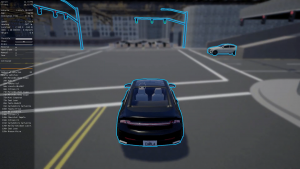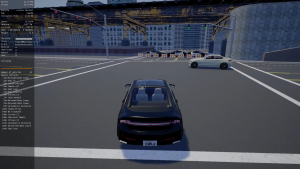Mr. Stark is a software engineer at SHIELD Industries, Star City. He is leading a team that is developing the software for the self-driving car CarVis, that SHIELD plans to launch in Star City. The hardware for CarVis is not ready yet, which is making it difficult for them to test their algorithm. Also, the software is still at an early stage and he cannot risk testing it on roads as it might lead to accidents. He needs to test in a simulated environment and the traffic behavior in simulator needs to be realistic for it to be a good alternative to on-road testing.
He orders the S.T.A.R.S simulator plug-in which can control the motion of cars in CARLA, such that their behavior is very close to what an autonomous car will encounter in the real world. After getting access to the product, the team plugs in CarVis’ algorithm to control the ego vehicle in CARLA and all the other vehicles around it are following S.T.A.R.S algorithm. The simulator starts generating some traffic scenarios where cars do not strictly follow traffic rules. As opposed to the other simulators, where agents always follow traffic lights (as shown in Figure 1), the S.T.A.R.S plug-in produces some cases as shown in Figure 2, where the car on the right breaks a red traffic light.

Figure 1: Idealistic Traffic Behavior

Figure 2: Realistic Traffic Behavior
The team notices a large number of accidents being caused by CarVis in some particular scenarios. They realize their algorithm needs to be modified to prevent this. They make some changes and then check in S.T.A.R.S ‘realistic’ simulation again. After a couple of such iterations, they are happy with their algorithm. Additionally, Mr. Stark is planning on using the same algorithm when launching CarVis in India, where people tend to drive more riskily. So, he needs the vehicles in CARLA to display such risky driving. Fortunately, S.T.A.R.S has a knob where a user can control the average ‘aggression’ in driving. He sets it to a higher level and then tests the algorithm for CarVis. He realizes that traffic rules are different in India and he needs to customize the behavior further for Indian roads. So he uses the model training pipeline packaged with the S.T.A.R.S plug-in on videos collected from traffic cameras in India. Another couple of iterations follow to make the algorithm suitable for Indian roads. Finally, their software is ready.
Two years later, Mr. Stark visits India with his children and a CarVis picks him up at the airport. He peacefully sleeps in the car on the way to his hotel. He knows he can rely on CarVis’ algorithm because of the extensive testing. He whispers a silent gratitude to Team S.T.A.R.S for this!